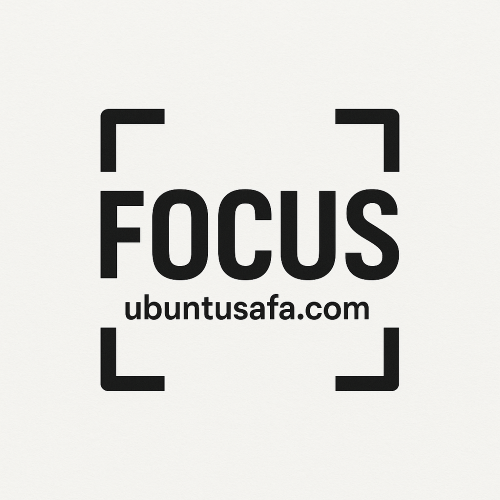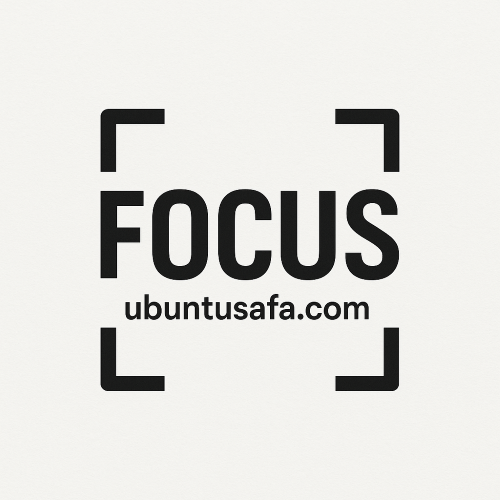How Vulnerable Is America’s Reliance on Satellites and Cyber Networks for Air and Space Operations?
In modern warfare, the silent backbone of American air and space operations is not just stealth aircraft, hypersonic weapons, or even carriers in distant seas—it is the invisible lattice of satellites and cyber networks that connect everything together.
From GPS-guided bombs and encrypted communications to missile warning systems and drone operations, the U.S. military is more dependent than ever on digital and orbital infrastructure.
Yet this reliance creates both an unmatched advantage and a dangerous vulnerability: if those networks are disrupted, blinded, or hijacked, the world’s most advanced military could suddenly find itself fighting in the dark.
The Foundation of U.S. Military Power-
America’s military dominance is often portrayed in terms of aircraft like the F-35, carrier strike groups, or nuclear submarines. But in reality, nearly all of these platforms derive their true effectiveness from satellite and cyber networks. Consider just a few examples:
Navigation and Timing: GPS, operated by the U.S. Space Force, underpins not just smart weapons but also aircraft flight paths, naval maneuvering, and even logistics supply chains.
Communication: Secure satellite links allow fighter jets, drones, and ground troops to coordinate across vast distances.
Surveillance and Reconnaissance: Spy satellites deliver real-time imagery and signals intelligence, giving commanders a global view of adversary movements.
Missile Defense: Early warning satellites detect launches within seconds, providing critical time to intercept or retaliate.
Strip away these assets, and the U.S. would lose much of the precision and speed that defines modern American warfare.
The Threat Landscape
1. Anti-Satellite (ASAT) Weapons-
Both China and Russia have developed weapons capable of destroying or disabling satellites. In 2007, China shocked the world by using a missile to blow up one of its own weather satellites—demonstrating the ability to target low-Earth orbit. Since then, Beijing has reportedly tested “co-orbital” systems that can maneuver close to other satellites, potentially disabling them with jammers, robotic arms, or even kamikaze collisions. Russia has conducted similar tests. A small number of ASAT attacks on critical GPS or communication satellites could cripple U.S. forces during a crisis.
2. Cyber Intrusions-
Unlike a missile strike, a cyberattack leaves no debris trail and can be deniable. U.S. satellites and their ground stations are constant targets of hacking attempts. A successful breach could shut down communication links, feed false data, or seize control of orbital assets. In 2018, reports surfaced that Chinese hackers targeted contractors connected to U.S. satellite operations. As military networks become more complex, the attack surface only grows.
3. Jamming and Spoofing-
GPS signals are inherently weak and vulnerable to interference. Both Russia and China have deployed powerful jammers capable of disrupting GPS over wide areas. Spoofing—sending false GPS signals—can mislead aircraft, ships, or missiles into going off course. In recent years, NATO exercises in Eastern Europe have reported Russian GPS disruptions affecting both civilian and military systems.
4. Space Debris and Collisions-
Even without deliberate attacks, space is increasingly congested. With thousands of satellites now in orbit and mega-constellations like SpaceX’s Starlink being deployed, the risk of accidental collisions rises. An adversary could also create debris clouds deliberately, rendering orbital pathways too hazardous for U.S. military satellites.
Why the Stakes Are So High-
The U.S. military is built around the concept of network-centric warfare—a system where sensors, decision-makers, and shooters are seamlessly connected. Without satellites, advanced aircraft like the F-35 lose their ability to share targeting data. Without cyber-secure communications, drones cannot be piloted, missiles cannot receive mid-course updates, and troops lose coordination.
In short, America’s heavy reliance means adversaries don’t necessarily need to match U.S. firepower plane-for-plane or ship-for-ship. They simply need to target the connective tissue—the satellites and networks—that bind the U.S. military machine together. This asymmetric approach is precisely why China and Russia have invested so heavily in counter-space and cyber capabilities.
Steps Toward Resilience-
The U.S. has not ignored these vulnerabilities. Several initiatives aim to make its space and cyber infrastructure more resilient:
Space Force Modernization: The creation of the U.S. Space Force in 2019 reflects recognition of space as a warfighting domain. New programs emphasize more numerous, smaller satellites that are harder to target, rather than a few large ones.
Protected Communications: The U.S. is developing hardened, jam-resistant communication satellites like the Advanced Extremely High Frequency (AEHF) system.
Cyber Defense Investments: Cyber Command and Space Command are working more closely to safeguard ground stations and data links. Artificial intelligence is being deployed to detect anomalies in network behavior that could indicate cyber intrusions.
Allied Cooperation: Partnerships with NATO and Indo-Pacific allies help share satellite coverage and build redundancy. For example, Britain, France, and Japan are expanding their own military space programs.
Private Sector Integration: With commercial space actors like SpaceX, Amazon’s Kuiper, and others launching massive satellite constellations, the Pentagon is looking at ways to integrate these networks into defense planning—giving redundancy at lower cost.
The Future Battlefield-
Looking ahead, warfare in space and cyberspace will likely be less about outright destruction and more about denial and deception. An adversary may not need to blow up U.S. satellites; it may be enough to jam signals, feed false data, or disable control systems temporarily. The challenge for the U.S. will be to ensure redundancy, rapid reconstitution, and a mix of space-based and terrestrial alternatives so no single failure cripples its forces.
Conclusion: A Fragile High Ground-
America’s reliance on satellites and cyber networks has given it extraordinary global reach and precision. But this high ground is fragile.
The same systems that enable lightning-fast strikes and worldwide coordination could also be the soft underbelly of U.S. power in a major conflict.
If an adversary can blind the eye in the sky or sever the digital arteries of the U.S. military, the advantage of high-tech systems like stealth aircraft and missile defenses would quickly erode.
Thus, the question is not whether satellites and cyber networks will remain central—they will—but whether the U.S. can harden and diversify them fast enough to prevent its own strength from becoming its greatest vulnerability.
In modern warfare, the silent backbone of American air and space operations is not just stealth aircraft, hypersonic weapons, or even carriers in distant seas—it is the invisible lattice of satellites and cyber networks that connect everything together.
From GPS-guided bombs and encrypted communications to missile warning systems and drone operations, the U.S. military is more dependent than ever on digital and orbital infrastructure.
Yet this reliance creates both an unmatched advantage and a dangerous vulnerability: if those networks are disrupted, blinded, or hijacked, the world’s most advanced military could suddenly find itself fighting in the dark.
The Foundation of U.S. Military Power-
America’s military dominance is often portrayed in terms of aircraft like the F-35, carrier strike groups, or nuclear submarines. But in reality, nearly all of these platforms derive their true effectiveness from satellite and cyber networks. Consider just a few examples:
Navigation and Timing: GPS, operated by the U.S. Space Force, underpins not just smart weapons but also aircraft flight paths, naval maneuvering, and even logistics supply chains.
Communication: Secure satellite links allow fighter jets, drones, and ground troops to coordinate across vast distances.
Surveillance and Reconnaissance: Spy satellites deliver real-time imagery and signals intelligence, giving commanders a global view of adversary movements.
Missile Defense: Early warning satellites detect launches within seconds, providing critical time to intercept or retaliate.
Strip away these assets, and the U.S. would lose much of the precision and speed that defines modern American warfare.
The Threat Landscape
1. Anti-Satellite (ASAT) Weapons-
Both China and Russia have developed weapons capable of destroying or disabling satellites. In 2007, China shocked the world by using a missile to blow up one of its own weather satellites—demonstrating the ability to target low-Earth orbit. Since then, Beijing has reportedly tested “co-orbital” systems that can maneuver close to other satellites, potentially disabling them with jammers, robotic arms, or even kamikaze collisions. Russia has conducted similar tests. A small number of ASAT attacks on critical GPS or communication satellites could cripple U.S. forces during a crisis.
2. Cyber Intrusions-
Unlike a missile strike, a cyberattack leaves no debris trail and can be deniable. U.S. satellites and their ground stations are constant targets of hacking attempts. A successful breach could shut down communication links, feed false data, or seize control of orbital assets. In 2018, reports surfaced that Chinese hackers targeted contractors connected to U.S. satellite operations. As military networks become more complex, the attack surface only grows.
3. Jamming and Spoofing-
GPS signals are inherently weak and vulnerable to interference. Both Russia and China have deployed powerful jammers capable of disrupting GPS over wide areas. Spoofing—sending false GPS signals—can mislead aircraft, ships, or missiles into going off course. In recent years, NATO exercises in Eastern Europe have reported Russian GPS disruptions affecting both civilian and military systems.
4. Space Debris and Collisions-
Even without deliberate attacks, space is increasingly congested. With thousands of satellites now in orbit and mega-constellations like SpaceX’s Starlink being deployed, the risk of accidental collisions rises. An adversary could also create debris clouds deliberately, rendering orbital pathways too hazardous for U.S. military satellites.
Why the Stakes Are So High-
The U.S. military is built around the concept of network-centric warfare—a system where sensors, decision-makers, and shooters are seamlessly connected. Without satellites, advanced aircraft like the F-35 lose their ability to share targeting data. Without cyber-secure communications, drones cannot be piloted, missiles cannot receive mid-course updates, and troops lose coordination.
In short, America’s heavy reliance means adversaries don’t necessarily need to match U.S. firepower plane-for-plane or ship-for-ship. They simply need to target the connective tissue—the satellites and networks—that bind the U.S. military machine together. This asymmetric approach is precisely why China and Russia have invested so heavily in counter-space and cyber capabilities.
Steps Toward Resilience-
The U.S. has not ignored these vulnerabilities. Several initiatives aim to make its space and cyber infrastructure more resilient:
Space Force Modernization: The creation of the U.S. Space Force in 2019 reflects recognition of space as a warfighting domain. New programs emphasize more numerous, smaller satellites that are harder to target, rather than a few large ones.
Protected Communications: The U.S. is developing hardened, jam-resistant communication satellites like the Advanced Extremely High Frequency (AEHF) system.
Cyber Defense Investments: Cyber Command and Space Command are working more closely to safeguard ground stations and data links. Artificial intelligence is being deployed to detect anomalies in network behavior that could indicate cyber intrusions.
Allied Cooperation: Partnerships with NATO and Indo-Pacific allies help share satellite coverage and build redundancy. For example, Britain, France, and Japan are expanding their own military space programs.
Private Sector Integration: With commercial space actors like SpaceX, Amazon’s Kuiper, and others launching massive satellite constellations, the Pentagon is looking at ways to integrate these networks into defense planning—giving redundancy at lower cost.
The Future Battlefield-
Looking ahead, warfare in space and cyberspace will likely be less about outright destruction and more about denial and deception. An adversary may not need to blow up U.S. satellites; it may be enough to jam signals, feed false data, or disable control systems temporarily. The challenge for the U.S. will be to ensure redundancy, rapid reconstitution, and a mix of space-based and terrestrial alternatives so no single failure cripples its forces.
Conclusion: A Fragile High Ground-
America’s reliance on satellites and cyber networks has given it extraordinary global reach and precision. But this high ground is fragile.
The same systems that enable lightning-fast strikes and worldwide coordination could also be the soft underbelly of U.S. power in a major conflict.
If an adversary can blind the eye in the sky or sever the digital arteries of the U.S. military, the advantage of high-tech systems like stealth aircraft and missile defenses would quickly erode.
Thus, the question is not whether satellites and cyber networks will remain central—they will—but whether the U.S. can harden and diversify them fast enough to prevent its own strength from becoming its greatest vulnerability.
How Vulnerable Is America’s Reliance on Satellites and Cyber Networks for Air and Space Operations?
In modern warfare, the silent backbone of American air and space operations is not just stealth aircraft, hypersonic weapons, or even carriers in distant seas—it is the invisible lattice of satellites and cyber networks that connect everything together.
From GPS-guided bombs and encrypted communications to missile warning systems and drone operations, the U.S. military is more dependent than ever on digital and orbital infrastructure.
Yet this reliance creates both an unmatched advantage and a dangerous vulnerability: if those networks are disrupted, blinded, or hijacked, the world’s most advanced military could suddenly find itself fighting in the dark.
The Foundation of U.S. Military Power-
America’s military dominance is often portrayed in terms of aircraft like the F-35, carrier strike groups, or nuclear submarines. But in reality, nearly all of these platforms derive their true effectiveness from satellite and cyber networks. Consider just a few examples:
Navigation and Timing: GPS, operated by the U.S. Space Force, underpins not just smart weapons but also aircraft flight paths, naval maneuvering, and even logistics supply chains.
Communication: Secure satellite links allow fighter jets, drones, and ground troops to coordinate across vast distances.
Surveillance and Reconnaissance: Spy satellites deliver real-time imagery and signals intelligence, giving commanders a global view of adversary movements.
Missile Defense: Early warning satellites detect launches within seconds, providing critical time to intercept or retaliate.
Strip away these assets, and the U.S. would lose much of the precision and speed that defines modern American warfare.
The Threat Landscape
1. Anti-Satellite (ASAT) Weapons-
Both China and Russia have developed weapons capable of destroying or disabling satellites. In 2007, China shocked the world by using a missile to blow up one of its own weather satellites—demonstrating the ability to target low-Earth orbit. Since then, Beijing has reportedly tested “co-orbital” systems that can maneuver close to other satellites, potentially disabling them with jammers, robotic arms, or even kamikaze collisions. Russia has conducted similar tests. A small number of ASAT attacks on critical GPS or communication satellites could cripple U.S. forces during a crisis.
2. Cyber Intrusions-
Unlike a missile strike, a cyberattack leaves no debris trail and can be deniable. U.S. satellites and their ground stations are constant targets of hacking attempts. A successful breach could shut down communication links, feed false data, or seize control of orbital assets. In 2018, reports surfaced that Chinese hackers targeted contractors connected to U.S. satellite operations. As military networks become more complex, the attack surface only grows.
3. Jamming and Spoofing-
GPS signals are inherently weak and vulnerable to interference. Both Russia and China have deployed powerful jammers capable of disrupting GPS over wide areas. Spoofing—sending false GPS signals—can mislead aircraft, ships, or missiles into going off course. In recent years, NATO exercises in Eastern Europe have reported Russian GPS disruptions affecting both civilian and military systems.
4. Space Debris and Collisions-
Even without deliberate attacks, space is increasingly congested. With thousands of satellites now in orbit and mega-constellations like SpaceX’s Starlink being deployed, the risk of accidental collisions rises. An adversary could also create debris clouds deliberately, rendering orbital pathways too hazardous for U.S. military satellites.
Why the Stakes Are So High-
The U.S. military is built around the concept of network-centric warfare—a system where sensors, decision-makers, and shooters are seamlessly connected. Without satellites, advanced aircraft like the F-35 lose their ability to share targeting data. Without cyber-secure communications, drones cannot be piloted, missiles cannot receive mid-course updates, and troops lose coordination.
In short, America’s heavy reliance means adversaries don’t necessarily need to match U.S. firepower plane-for-plane or ship-for-ship. They simply need to target the connective tissue—the satellites and networks—that bind the U.S. military machine together. This asymmetric approach is precisely why China and Russia have invested so heavily in counter-space and cyber capabilities.
Steps Toward Resilience-
The U.S. has not ignored these vulnerabilities. Several initiatives aim to make its space and cyber infrastructure more resilient:
Space Force Modernization: The creation of the U.S. Space Force in 2019 reflects recognition of space as a warfighting domain. New programs emphasize more numerous, smaller satellites that are harder to target, rather than a few large ones.
Protected Communications: The U.S. is developing hardened, jam-resistant communication satellites like the Advanced Extremely High Frequency (AEHF) system.
Cyber Defense Investments: Cyber Command and Space Command are working more closely to safeguard ground stations and data links. Artificial intelligence is being deployed to detect anomalies in network behavior that could indicate cyber intrusions.
Allied Cooperation: Partnerships with NATO and Indo-Pacific allies help share satellite coverage and build redundancy. For example, Britain, France, and Japan are expanding their own military space programs.
Private Sector Integration: With commercial space actors like SpaceX, Amazon’s Kuiper, and others launching massive satellite constellations, the Pentagon is looking at ways to integrate these networks into defense planning—giving redundancy at lower cost.
The Future Battlefield-
Looking ahead, warfare in space and cyberspace will likely be less about outright destruction and more about denial and deception. An adversary may not need to blow up U.S. satellites; it may be enough to jam signals, feed false data, or disable control systems temporarily. The challenge for the U.S. will be to ensure redundancy, rapid reconstitution, and a mix of space-based and terrestrial alternatives so no single failure cripples its forces.
Conclusion: A Fragile High Ground-
America’s reliance on satellites and cyber networks has given it extraordinary global reach and precision. But this high ground is fragile.
The same systems that enable lightning-fast strikes and worldwide coordination could also be the soft underbelly of U.S. power in a major conflict.
If an adversary can blind the eye in the sky or sever the digital arteries of the U.S. military, the advantage of high-tech systems like stealth aircraft and missile defenses would quickly erode.
Thus, the question is not whether satellites and cyber networks will remain central—they will—but whether the U.S. can harden and diversify them fast enough to prevent its own strength from becoming its greatest vulnerability.
0 Commentarios
0 Acciones
4K Views
0 Vista previa









